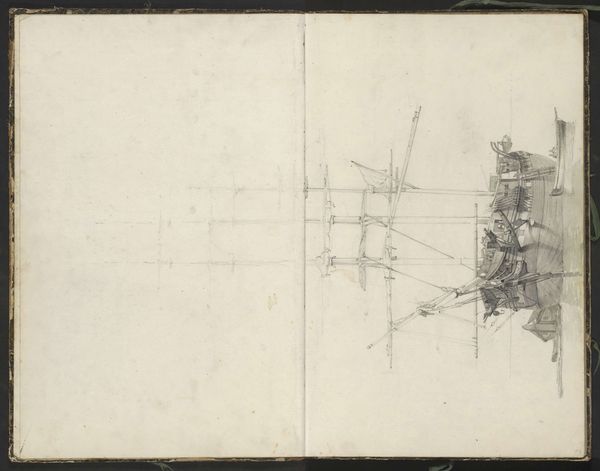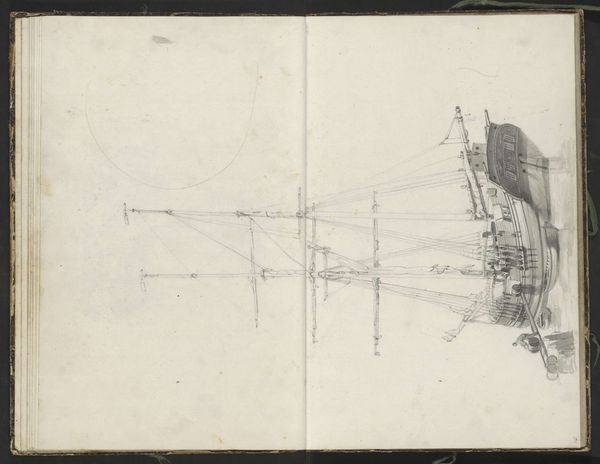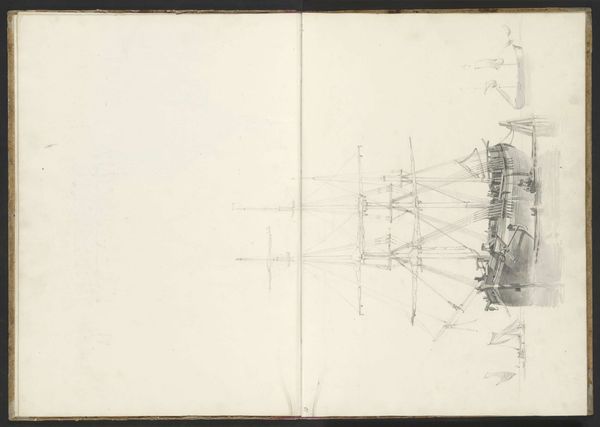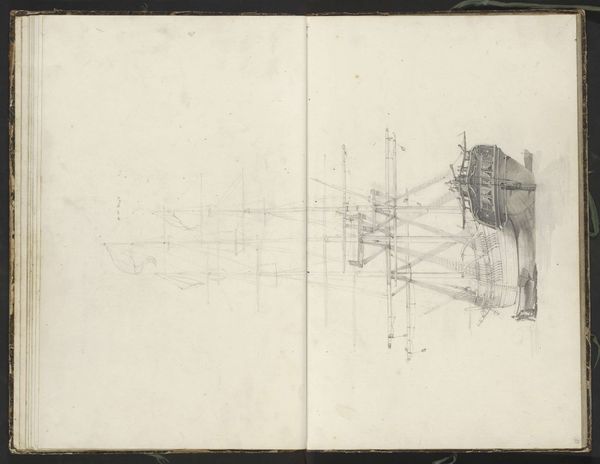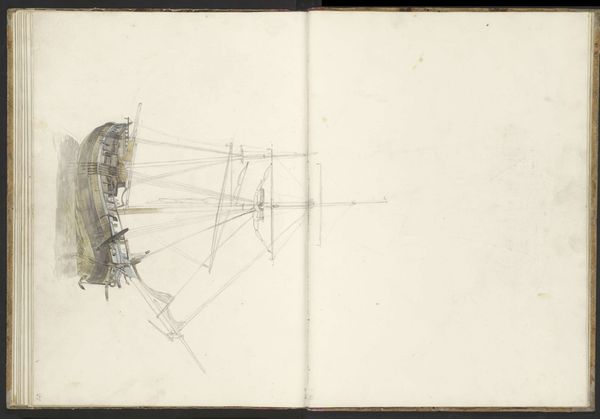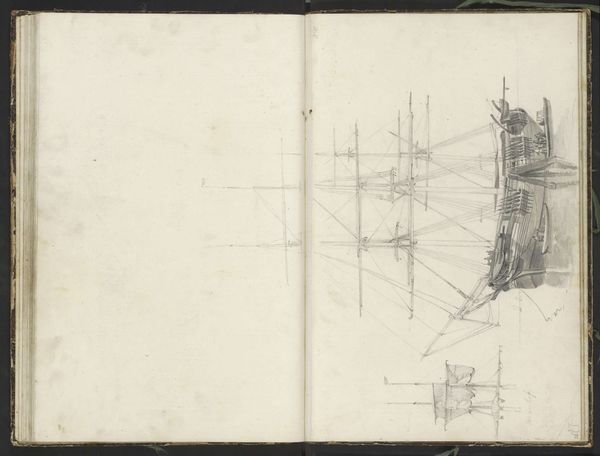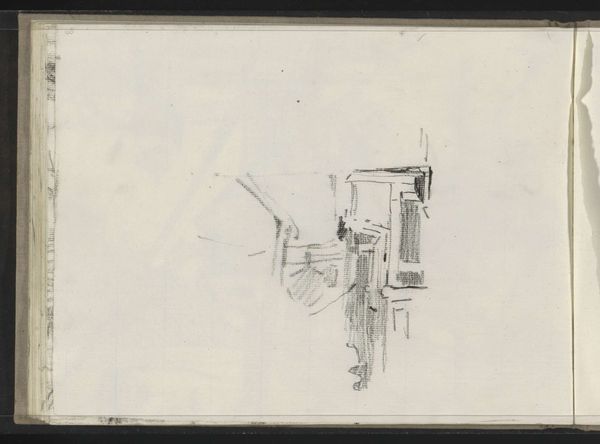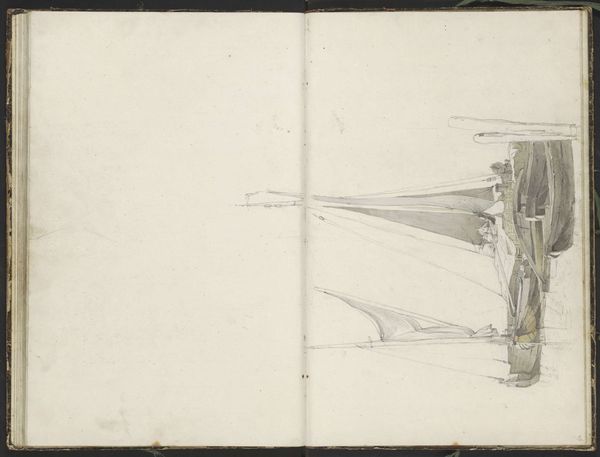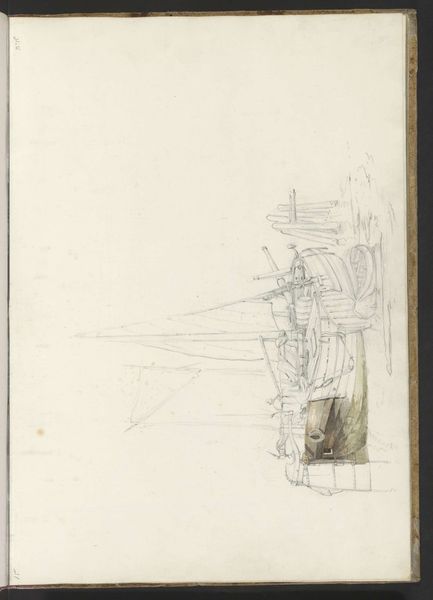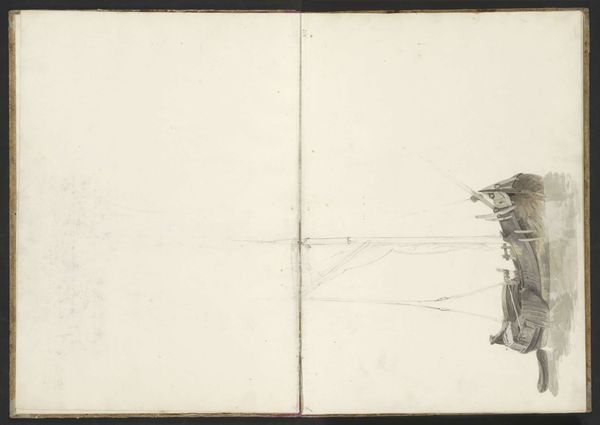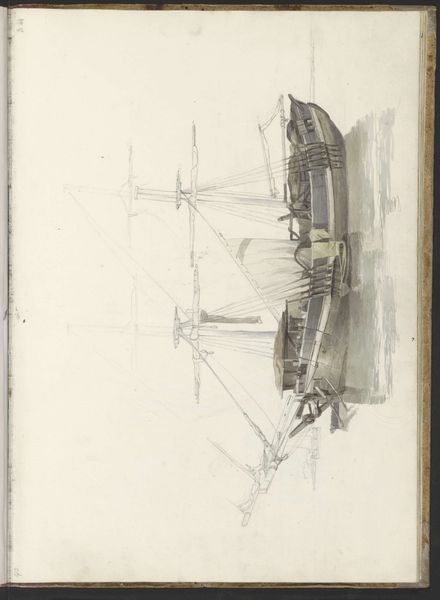
drawing, watercolor
#
drawing
#
aged paper
#
toned paper
#
sketch book
#
incomplete sketchy
#
landscape
#
personal sketchbook
#
watercolor
#
romanticism
#
sketchbook drawing
#
watercolour bleed
#
watercolour illustration
#
sketchbook art
#
watercolor
Copyright: Rijks Museum: Open Domain
Curator: Let's take a closer look at this page from a sketchbook featuring "Figuren op een afgemeerde tweemaster" – or Figures on a Moored Two-Master, as it translates – created by Johannes Christiaan Schotel sometime between 1797 and 1838. It's rendered in delicate watercolor and drawing on what appears to be aged paper. Editor: It gives me a very intimate impression, like glimpsing into the artist's personal world, their process. The colors are so muted, it has a certain melancholy air about it, like a quiet reflection on the passing of time. Curator: Indeed, sketchbook art often offers precisely that glimpse. The Romanticism movement, of which Schotel was a part, valued personal expression and emotional intensity, and this sketchbook provides direct access. I wonder what commentary we can weave through this observation, perhaps how maritime trade affected different demographics? Editor: Given the context of maritime trade during that period, I am more keen on wondering whose labor supported these vessels. We could consider the colonial implications, who bore the costs, literally, of that economy of movement, how does that weigh against the perceived romantic vision of the sea. Curator: Precisely. Furthermore, we can dive into who were these people sketching boats? Were they involved in maritime trade or spectators, chronicling it from the shore? Editor: A quick search reveals Johannes Christiaan Schotel followed his father into a painting career, with an obvious and strong focus on nautical scenes. The level of access and skill needed to paint this piece meant this artist would have been positioned within networks of considerable social and financial capital. Curator: Absolutely. The institutional history of artistic training plays a role, shaping not only the artist's technical abilities but also their perspective and subject matter. We also notice that this rendering looks almost "incomplete," but maybe this speaks to Romantic ideals that preferred fragments over the complete composition. Editor: Yes, even in its "unfinished" state, the drawing provokes so many compelling questions around class, labor, and the cultural legacies tied to seafaring in Dutch society, opening new avenues for analysis and contemporary critiques within that historic setting. Curator: This deeper analysis highlights the layers of meaning embedded within Schotel's simple sketch, allowing us to examine those social structures underpinning art and culture during his lifetime. Editor: Exactly! And from my view, hopefully this helps us recognize how even a seemingly simple sketchbook drawing can become a site for understanding and unpacking the relationship between art, society, and power.
Comments
No comments
Be the first to comment and join the conversation on the ultimate creative platform.
